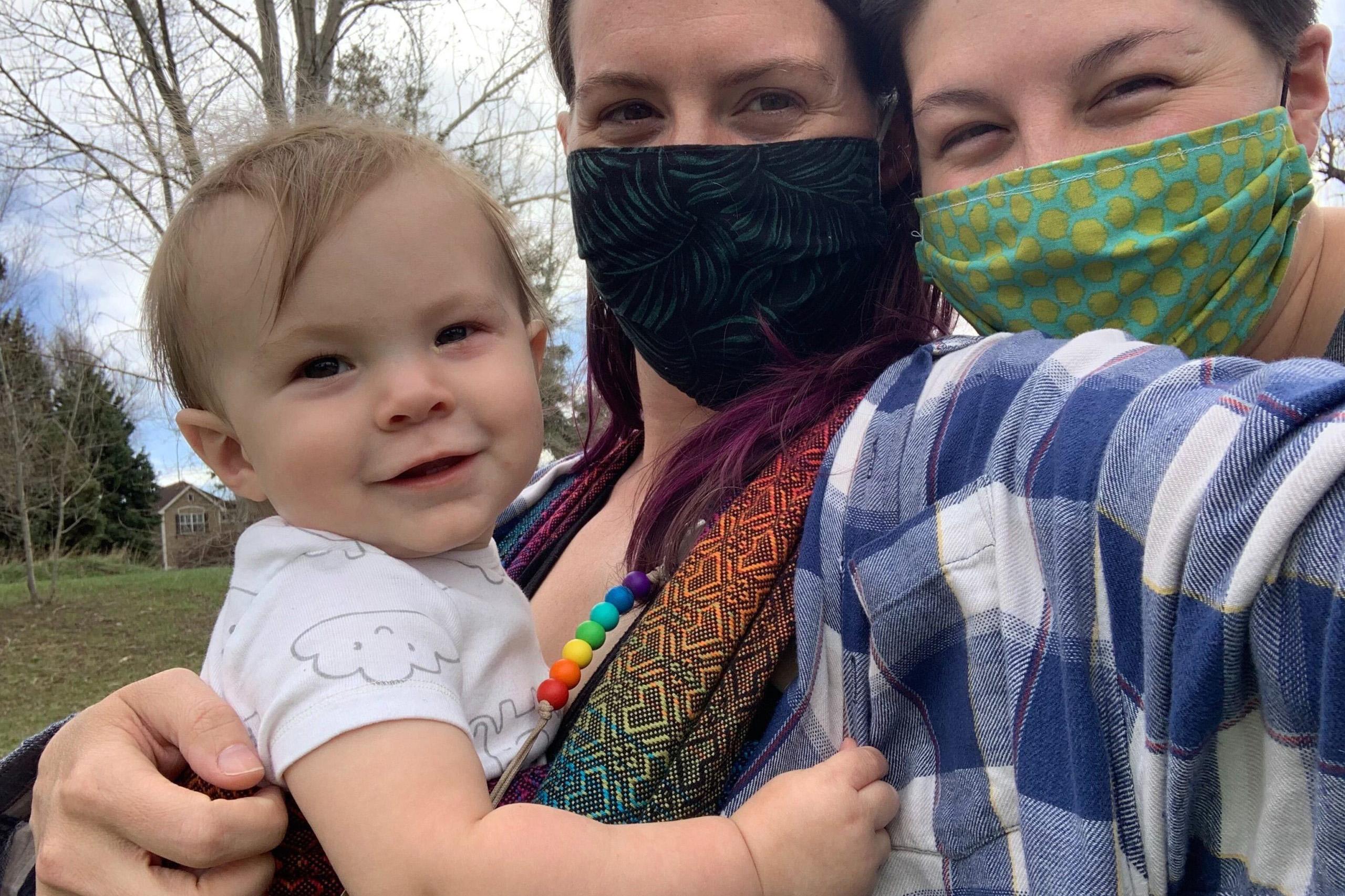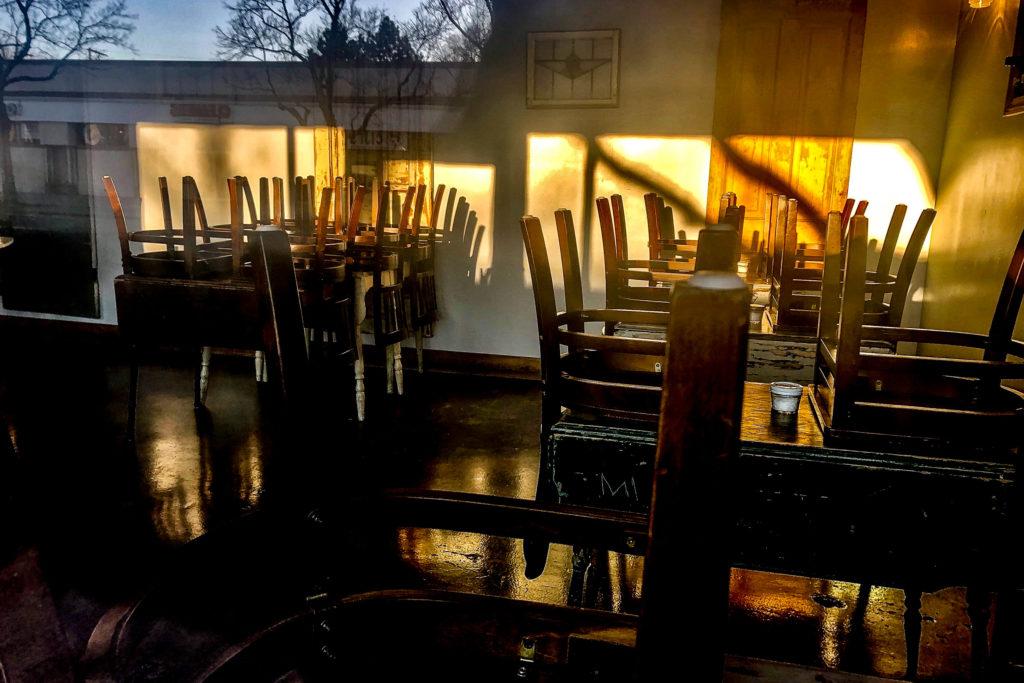
Dawn Pinner used to earn $20,000 a year by stitching together a half-dozen gigs. There was the events job, the cleaning gigs, the occasional house painting and a little money from selling her sculptures — enough to get by for the 61-year-old Denverite.
Most of that’s been erased by COVID-19. Now she’s spending a decade’s worth of savings, $7,000 that she’d painstakingly put aside for her dream of visiting Iceland.
“Well, that money is what paid my rent this month,” Pinner said. “It’s going to have to pay for rent next month.”
She doesn’t know what will pay for the month after that. Because it’s coming in the mail instead of direct deposit, her stimulus check might not arrive until August, and she’s hesitated to file for unemployment amid widespread reports of delays and glitches.
“I just keep telling myself I don’t care,” she said. “I could maybe pick up a house painting job. It’s awful hard work at my age.”
Pinner’s one of at least 350,000 Coloradans trying to rebuild their lives a month into America’s economic implosion. Each week of the disaster has dumped tens of thousands more people from their jobs: restaurant servers and hotel cleaners, then retail workers, haircutters and dentist’s offices and everyone else.
Many are measuring their resources in “weeks left.” And the disaster already has bent the trajectories of countless lives.
“I’m definitely concerned about how this crisis could actually expand that inequality, and how those who have the least are going to struggling the most to weather this storm,” said Paula Cole, an economist with the University of Denver.
Historic demand and aging systems
The first uptick of unemployment claims started on the week that ended March 14. Gov. Jared Polis declared a state of emergency that Tuesday. On Saturday, ski resorts stopped their lifts on his order.
Then came the suspension of schools, non-essential surgeries and retail operations. By the end of the week ending on March 21, unemployment claims had grown from 2,000 to 20,000. The damage multiplied each week, with huge numbers of jobs erased in health care, retail and social assistance workers. In a single April week, more than 100,000 applied for unemployment — an off-the-charts record high.
Every industry has been affected, with about 10 percent of Colorado’s workforce filing an unemployment claim, according to Ryan Gedney, a senior economist with the state’s Department of Labor and Employment.
“If we just look at claims volume, it’s really widespread,” he said. “I’m seeing this touch across every sector.”
More than 170,000 people were receiving benefits as of April 11, far surpassing the record set during the Great Recession. Colorado’s unemployment system is under 10 times more weekly demand than ever before. Programmers successfully stabilized the aging unemployment website after initial crashes. The state has also dropped many of its pre-approval checks, allowing it to approve huge numbers of claims each week.
“This is really technical and very tangled. And here’s the other thing — everything changes by the day,” said David Seligman, executive director of Towards Justice, an advocacy law firm with a focus on labor issues.
Still, a combination of byzantine rules and frustrating glitches has left countless people locked out. Desperate requests for help have flooded the state’s call centers. The support staff has doubled to about 160 people, but the lines are constantly busy, forcing people to make hundreds of calls and spend long hours on hold.
“I’m tenacious. I won’t give up on this," said Martha Pasquale, 63, as she listened to the 56th minute of hold music. “It’s frustrating. It makes me crazy, but what else am I doing?”
Waiting, wondering: ‘What’s next?’
Unemployed people told CPR News they were skipping rent and mortgage payments, delaying their utility bills and deferring car payments to get by. The collapse has hollowed out lower-income jobs where people are less likely to have savings.
Some are careening toward a cliff with no safety net. An estimated 180,000 undocumented people in Colorado can’t collect unemployment or stimulus benefits.
“That’s folks working in construction, working in cleaning, working in landscaping, working in restaurants. They've either lost their work completely or been sent home with far fewer hours than they’re accustomed to,” said Whitney Duncan, an associate anthropology professor at the University of Northern Colorado who is following immigrant families in a long term study.
“They’re now having to survive with no paycheck whatsoever, and they don’t qualify for unemployment,” Duncan said, describing a “pressure cooker situation.’
Countless others who do qualify for benefits are still waiting anxiously for their first payments.
“The money part is really my greatest stressor,” said Celest McGonagil, 58, a massage therapist.
She’s spent about 20 hours wrestling with the unemployment system since her employer closed on March 20. She never received an access PIN in the mail, a widespread problem.
“That’s the wall I’ve hit,” McGonagil said. She shares a two-bedroom apartment with her adult son, splitting the rent. Her savings will be gone by the time rent is due next month, and she’s already imagining worst-case scenarios if the situation drags on.
“It’s scary,” she said. “I can end up living in my vehicle and hunting around for a parking lot that I have to live in.”

Gig workers are included, but not without frustrations.
The state and federal governments have rushed to roll out unprecedented benefits. This week, Colorado’s gig workers are getting their first unemployment payments ever under a new federal law. The system was designed and built in just two weeks.
More than 51,000 people applied within 3 days, and payments were set to roll out soon afterward. But countless others were bogged down by contradictory information and glitches on state websites.
Carly Sargent-Knudson, 34, and their partner Ky waited weeks for the new system, checking and double-checking the flowcharts and tables to make sure they qualified. Sargent-Knudson is a dance instructor and their partner has gigs in music, food and alternative medicine.
Sargent-Knudson’s claim sailed through, but Ky’s has been hung up with inscrutable error messages for days.
“We have a baby. We have a 10-month-old baby, and our primary lines of income are stopped for the foreseeable future,” said the Fort Collins resident. “So, it's scary — and more than that, though, it's really frustrating.”
At least 10,000 gig workers had problems with their applications because they had mixed-income sources, including “regular” W-2 wages. The state has rolled out fixes to help them.
At the same time, hundreds of people this week reported delays in their benefit payments as the system strained to deliver one of its biggest single payments ever. CDLE said it sent the money on time, but that banks were overwhelmed trying to process it all. Instead of receiving payments Monday through Wednesday, people’s benefits started to arrive on Thursday.
“These systems have never been built to sustain this demand,” said Cher Roybal Haavind, CDLE’s deputy executive director. “Not even are the financial institutions built to sustain this demand.”
Jeff Fitzgerald, chief of operations for CDLE, said his team was doing “its absolute best” to fix “pain points” and speed up payments. The state’s base unemployment system is built on the aging COBOL computer language. The consultancy Deloitte helped build the new gig-worker system on modern technology.
For those lucky enough to get benefits, the clock is already ticking.
People on unemployment have anywhere from 13 weeks to 39 weeks of benefits left on the clock. The feds have boosted weekly payments by $600, which will more than double the average benefit, but that increase expires at the end of July.
It’s far from clear how many jobs will return by then. Entire industries have evaporated and may not come back for months or years.
“I’m trying to remain optimistic,” Sandra Samman, 45, said. “But I think this is going to change a lot of what I do in the future.”
An independent yoga instructor, she fears that gyms won’t reopen or won’t have room for her classes.
Food service and hospitality workers could be among the first to run out of benefits, since their industry was hit early and hard. More than 10,000 workers in that sector filed unemployment claims in the opening week of the economic crisis alone.

Audrey Huguley, 27, lost her job at a small North Denver restaurant in mid-March. The first thing she and her boyfriend did was clear the alcohol out of their house, knowing it would be a temptation. Instead, they’ve kept busy with the puppy they had just adopted.
Unemployment benefits have replaced about three-quarters of her income, but the future is cloudy.
“I think that the market's going to be supersaturated with unemployed restaurant workers, and we're just going to have a bunch of closed restaurants that can't employ people anymore,” she said.
The National Restaurant Association estimates that 173,000 restaurant workers have been laid off in Colorado, about three-quarters of the workforce. It estimates that the state industry will lose $975 million in sales in April.
Restaurants may be allowed to reopen their dining rooms in mid-May, but since they will likely have to greatly increase spacing between patrons, they won’t need as many servers — and many won’t reopen at all. About 14 percent of U.S. restaurateurs expect to permanently close by mid-May, according to the national group.
Huguley predicts that her next restaurant job would be a step backward from the farm-to-table, wine-focused restaurant she just left — if she stays in the industry at all.
“If I have to go back to Applebee's, I guess I'll go back to Applebee's," she said.
The pain won’t end with the pandemic.
Colorado now has more people seeking and receiving unemployment than ever before. It’s unprecedented, and economists hesitate to even guess when it could be over.
“It’s an astounding number,” said Brian Lewandowski, an economist for CU Leeds School of Business. “We’re starting to run some models on (the duration of the crisis) now. I hear analysts talk about people not congregating for the rest of the year.”
Early numbers show that young people and women in low-paying jobs are especially hard hit. People ages 16 to 34 made up half of the post-COVID unemployment claims, compared to just 30 percent of last year’s claims. Women have seen a similar jump.
Even after the immediate crisis, the damage may linger for decades. Young people graduating into economic recessions tend to have lower lifetime earnings. And those later in their working lives are likely tapping reserves meant for retirement or their children’s education, said Cole, the DU economist. Additionally, the loss of job-connected health insurance could keep people from getting the care they need, with lasting consequences.
Cole suggested that government leaders look beyond the immediate catastrophe, too. She said for a true recovery, they should be thinking on the scale of the 1930s New Deal — the massive package of policies that directly employed more than 8 million Americans and rewrote the rules for the economy.
“This isn’t a blizzard. It’s a winter.”
Polis’ stay-at-home order expires Sunday, but that doesn’t mean everything will go back to normal. A few jobs could recover relatively quickly, such as health care workers who were furloughed because the shutdown stopped non-essential procedures.
The situation requires employers and workers to balance health concerns with economic considerations. Managers of retail stores and other businesses may call their furloughed employees back as they reopen next week. If those workers don't want to return yet, they may lose their unemployment benefits.
But in other sectors, people face a much longer wait.
The hangover could be especially painful for resorts and mountain towns, even though they’ve had early victories against the virus. In the first week of April, Summit County saw 98 times more unemployment claims than it would in an average week. If tourism doesn’t resume this summer, things will only get worse.

In nearby Chaffee County, 26-year-old Audrey Spickermann knew it would be bad when the ski resorts closed.
“The saying I’ve heard a lot is, ‘This isn’t a blizzard. It’s a winter,’” she said on March 18, as restrictions were ramping up.
The hostel that Spickermann manages in Salida had dropped from full capacity to a single guest.
Spickermann’s boss is paying her $1,200 a month through the crisis, using money from a separate business — a compromise to keep her off unemployment. It’s enough to pay for Spickermann’s mortgage and food, but little else
Like many others, Spickermann is waiting in a kind of suspended animation.
“Especially because I’m not going anywhere or doing anything, I’m OK with this amount of money,” she said.
She’s trying to break her cabin fever with “junk” sci-fi books and Walt Whitman’s poetry.
Still, the big question looms: What happens next? Salida’s major summer festivals are being canceled, cutting off an economic lifeline. Spickermann guessed that the city and its workers could survive a season, maybe two, without its usual business.
“How long can we hold on,” Spickermann asked, “before the town sort of starts to disappear?”








